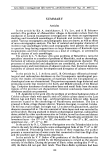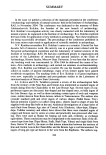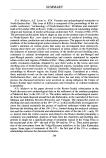Краткие сообщения Института археологии @ksia-iaran
Статьи журнала - Краткие сообщения Института археологии
Все статьи: 1873
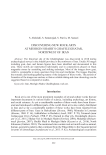
Discovering New Rock Arts at Meshgin Shahr’s Ghafeleghatar, Northwest of Iran
Статья научная
The historical site of the Ghafeleghatar was discovered in 2018 during archaeological survey in the Ardabil province in the northwest of Iran. Totally 50 images including goat, deer, and human figures have been identified and documented in this area. These motifs are represented individually and in compositions placed on black magnetite stones by scratching and striking technique. Most of the images show goat, which is comparable to many specimen from Iran and Azerbaijan. The images illustrate the nomadic and hunting-gathering nature of the designers of these works. The periods of formation of the images are unclear, so that no reliable dating and clear chronology can be suggested based on comparative studies.
Бесплатно
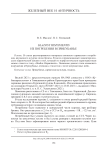
Gladius hispaniensis из погребения в Прикубанье
Статья научная
В статье рассматриваются материалы воинского сарматского погребения, впущенного в курган эпохи бронзы. В число сопровождающего инвентаря входили керамический кувшин и меч, который по морфологическим характеристикам можно отнести к типу «Gladius Hispaniensis». Появление данного типа клинкового вооружения в Прикубанье, очевидно, относится к эпохе митридатовых войн.
Бесплатно
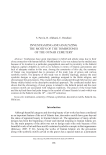
Investigating and analyzing the motifs of the tombstones of the Ounar cemetery
Статья научная
Tombstones have great importance in belief and artistic areas due to their close connection with human beliefs. Meshkinshahr’s city was selected as the studied area because of its location in a particular geographical area and its proximity to the Safavid religious capital (Ardabil) as well as its richness in terms of Islamic gravestones and lack of adequate studies in this area. Among the cemeteries of this city, the cemetery of Ounar was investigated due to presence of the main type of graves and various symbolic motifs. The purpose of this study was to identify typology, analyze the used symbolic designs or signs, particularly, paintings assigned to the Shiite religion, and chronologize the gravestones. This research has been conducted through field surveys and library studies based on the descriptive-analytical approach. The conducted studies have shown that the chronology of most graves is related to the Safavid period and the most common motifs are associated with religious traditions. The prayer of the Great Salat and the stylized three-leaf palm image is the symbol of Imam Hussein’s tomb which was common in the Safavid era (the 16th - mid-18th centuries).
Бесплатно
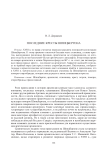
Статья научная
The eighteenth century is the period when the Pomor colonization ofSpitsbergen reached its peak. Most temporary camps and wooden crosses dated tothis period. The crosses performed various functions; however, most of them have notsurvived, though in the past these crosses were an integral feature of the Arctic landscape.Presently, two five-meter high Orthodox Church crosses, the last remaining crosses on thearchipelago, stand high in the northern part of the archipelago in the Murchison Bay fjordat 80° north latitude. The characteristics of the inscriptions allow the scholars to attributeat least one cross to the Old believers’ tradition. Written, figurative and archaeologicalsources provide ample evidence to conclude that Pomors who were Old rite believersplayed an important role in arranging temporary camps on Spitsbergen; they alwayserected crosses near such camps.
Бесплатно
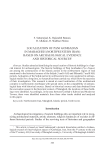
Статья научная
Studies aimed at identifying the exact location of historic buildings is of special interest for archaeologists. The historic buildings of Panj Gonbadan (Five Domes) are among the constructions of the Islamic period in the northwestern region of Iran mentioned in the historical sources of the Seljuk (5 and 6 AH) and Ilkhanid (7 and 8 AH) periods. Antiquities of the Seljuk period in northwestern Iran were neglected in archaeological studies for a long time, no research has been carried out, which show the necessity of their investigation. This research is aimed at exact localization of this architectural complex in northwestern Azerbaijan with special stress on the compatibility of archaeological data with historical sources. Based on historical sources and data obtained from the excavation season in the historical context of Maragheh, the locations of these buildings were identified. Accordingly, in the area between Gonbad-e Kabood and Modavvar Towers, there were identified materials from three other tombs studied and analyzed in this paper.
Бесплатно
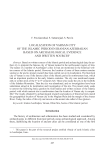
Статья научная
Based on written sources of the Islamic period and archaeological data, the authors try to pinpoint the famous city of Varsan located in the northwestern region of Iran. The names of a number of Azerbaijan's cities in Iran are mentioned in the historical written sources of the Islamic period. However, the location of some of these centers remains unclear so far and no proper research has been carried out on its localization. The historical city of Varsan is one of the famous cities of the Islamic period in northwestern Iran, which had an important position in the early Islamic centuries. The city was mentioned repeatedly in written texts of the 3rd to 5th centuries AH. These texts locate the city in the foothills of the Sabalan Mountains. Then the city was abandoned, and no investigations have been undertaken aimed at its localization and investigation of the site. The present study seeks to answer the following basic question by field studies and written sources of the Islamic period: with which ancient site in northwestern Iran the location of Varsan city is compatible? The results obtained by archaeological research and analysis of historical texts match the geographical location of Varsan city in the Mughan Plain and the margin of the Araxes River. Today, the relics of this city are known as the ancient site called «Ultan Qalasi».
Бесплатно
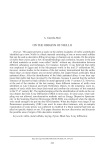
Статья научная
This paper presents a study on the earliest examples of niello scientifically identified up to now. Niello is a black material consisting of one or more metal sulfides that can be used as decorative filling in keyings or channels cut on metals. On the origins of niello there exists quite a few misunderstandings and confusion, because in the past all black materials on metals were called “niello” without any discrimination between different substances and techniques. For instance, formerly it was believed that niello was employed in Egypt and in the Mycenaean world in the mid 2nd millennium BC, however various studies in the nineties of the last century demonstrated that the earlier black inlays on metal objects are not metal sulfides, but copper-based, artificially black patinated alloys. After the identification of the black patinated alloys it was then supposed that niello had been invented by the Romans, because it seemed that the earliest instances of decorative black sulfides on metal appeared in the 1st century CE. However, at the end of the nineties of the last century, three different instances of niello were identified on Late Classical and Early Hellenistic objects. In the meantime, more examples of early niello have been discovered and confirm the existence of this material in the 5th-4th century BC. The method employed for the identification of niello on the various objects has been X-ray Diffraction (XRD) in most cases. In some cases, when sampling was not allowed, non-destructive methods such as Energy Dispersive Spectrometry in the Scanning Electron Microscope (SEM-EDS) was employed when the objects were small enough to be put into the SEM chamber. When the objects were larger X-ray fluorescence spectrometry (XRF) was used. In some other instances, only an autoptic examination of some pieces was sufficient to establish if a black material had been applied on specific objects or not. This paper discusses the new discoveries and discusses the possible area of origin of this decorative material.
Бесплатно
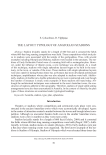
The Layout Typology of Anatolian Stadions
Статья научная
Stadion lexically stands for a length of 600 feet and it connoted the fields where 600-feet-long running competitions were held. These competitions which took place in stadions were associated with the temple of the god/goddess. Thus, with several examples including Olympia and Didyma, stadions were located in the sanctuary. The stadions of Early Hellenistic Period were of a running field with a rectangular plan. However, under the influence of theatre cavea, a new technique was developed. As a result of this technique, stadions with single sphendone layouts began to be built in the sanctuary, in the town, or outside of the town. These stadions with single sphendone layouts were also opted for during Roman times but, as Romans had more developed architectural techniques, amphitheaters whose plan was also adopted to stadions were built. Additionally, stadions of double turn, double sphendone layout were constructed and even though the number of instances is small, some examples of these stadions still stand today. Although the architectural techniques were enhanced in the most Anatolian towns, the construction of stadions adhered to the topography. Therefore, stadions of single sided seating arrangements have also been encountered in Anatolia. In the context of Anatolia, the plan types of these structures are examined under typological headings.
Бесплатно
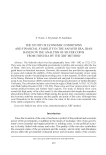
Статья научная
The Safavids ruled over Iran perpetually from 1501–1502 to 1722–1723. They were one of the most influential governments in politics and economy after the rise of Islam. Until now, this period’s economic conditions have been studied and investigated based on historical resources. However, this research has provided an opportunity to assess and evaluate the stability of this period’s financial and monetary power using the laboratory results of examining the existing coins. In this research, 30 silver coins kept in the Money Museum in Tehran were selected and analysed for elemental composition using X-ray Fluorescence (XRF) method in the Geological Laboratory of Tarbiat Modares University. The collection includes coins from the reign of Shah Ismail I (1502–1524 AD) until Shah Sultan Hossein (1694–1722 AD). These coins are from various mints in Iran’s current political borders and Greater Iran’s regions. The study of Safavid silver coins reveals the high purity of the silver metal. It also demonstrates that despite the unpredictable political history of the Safavid Shahs during this period, they consistently maintained the economic authority necessary and the quality and purity of the coins. Although there were fluctuations in the weight of the coins, the value of the silver coins remained relatively stable compared to other eras.
Бесплатно

